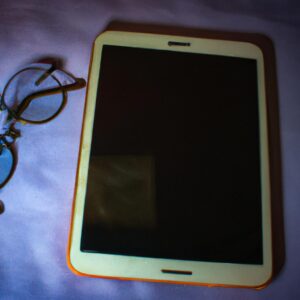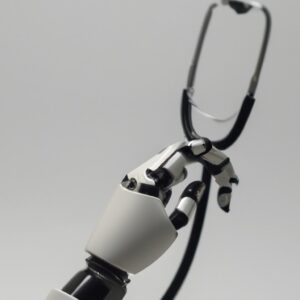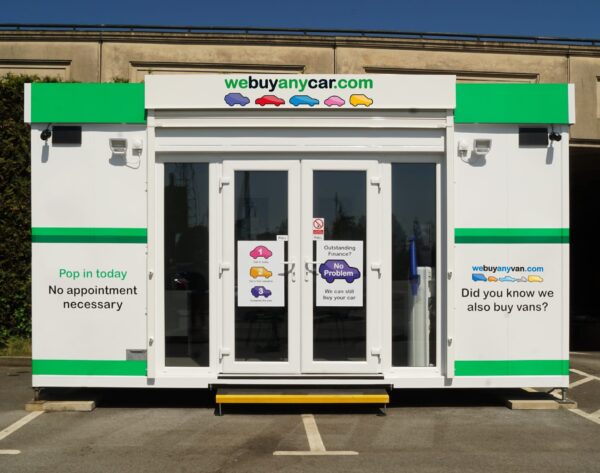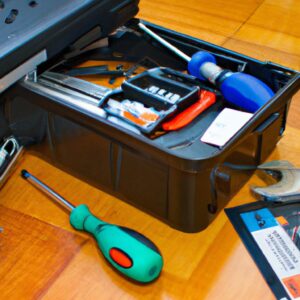Check Out the Pros & Cons: Which Is Ideal for Reading? E-Readers vs Tablets”

E-Readers vs. Tablets: Which Is Ideal for Reading?
E-readers and tablets are becoming increasingly popular as a way for readers to enjoy their favorite books and stories. But which of these devices is best suited for reading? In this guide, we’ll explore the benefits and drawbacks of both e-readers and tablets, and help you determine which device is ideal for your reading needs.
E-readers and tablets come with a range of features that can make reading more enjoyable and convenient. E-readers typically have smaller screens and lighter weight than tablets, and offer better battery life. They often come with special features to enhance the reading experience, such as adjustable lighting and font size. Tablets, on the other hand, are larger and more powerful. They are able to access a variety of content formats, including audio-books, videos and streaming services. They also come with touchscreens for easier navigation, and often support apps like Kindle for quick access to vast libraries.
Both e-readers and tablets have their advantages and disadvantages when it comes to reading. One of the biggest benefits of using an e-reader is its portability and storage capacity, making it easy to take anywhere. Additionally, their special features and improved display give readers an enhanced reading experience. Tablets, meanwhile, offer a wide range of content options and maximum flexibility due to their touchscreens and access to apps.
However, both devices have their drawbacks. E-readers tend to lack support for multi-media content and have more restrictive content formats, while tablets are more bulky and easily prone to screen breaks. Additionally, e-readers usually have a longer battery life than tablets, and they are generally less expensive.
To make the best decision for your reading needs, it is important to consider both the battery life and price of each device, as well as the range of content available. Battery life can vary between models, so make sure to research the battery life of the device you’re considering. Additionally, consider the type of content you want to read and if the device will support the formats you need. Finally, take the time to compare prices and look for deals or specials.
After considering all of these points, you can make the best decision for your reading needs. Both e-readers and tablets have their advantages and disadvantages, but ultimately, each device provides readers with a convenient and enjoyable way to read their favorite books and stories. With the right device, you can get the most out of your reading experience.
Advantages of E-Readers
E-readers have a lot of benefits that make them an ideal choice for reading. They are incredibly portable, meaning you can take your library with you wherever you go. They are also lightweight and easy to carry around, so you can always have your e-reader on hand.
Another major advantage of e-readers is their storage capacity. You can easily store hundreds or even thousands of books on a single device, without worrying about them being too bulky or taking up too much space. This makes it easy to carry around your entire library in one device.
E-readers also provide an improved reading experience due to their better displays and longer battery life. The displays on e-readers are often higher-resolution than those on tablets, giving the text a sharper and clearer look. Additionally, the long battery life allows you to enjoy hours of uninterrupted reading without having to worry about charging your device.
Advantages of Tablets for Readers
Tablets are great devices for reading and have a number of advantages over e-readers. One of the major benefits of using tablets for reading is the flexibility they offer as they can be used for so much more than just reading. With a tablet, you can take advantage of its touch-screen interface to do everything from taking notes to playing games and watching movies.
Another advantage of tablets is the availability of apps like Kindle, which allow readers to download books to their device quickly and easily. Additionally, some tablets have in-built light features, which make it easier to read in low light conditions compared to e-readers. Furthermore, if you are a fan of magazines and newspapers, apps like Apple News+ and Zinio help keep you up to date with all the latest news.
Finally, when it comes to storage, tablets can hold a lot more content than e-readers. Most tablets have up to 64GB of storage space, which can store thousands of books, pictures, videos, music, and more. This makes tablets an ideal option for readers who want an all-in-one device to meet their reading and entertainment needs.
Disadvantages of E-Readers
E-Readers have some drawbacks that must be considered when deciding which type of device is ideal for reading. One of the main disadvantages is the lack of multi-media support available on most e-readers. Most models do not support video or audio capabilities, meaning readers are unable to watch videos or listen to podcasts while reading an eBook. This can be a major limitation for some readers.
In addition to this, content formats can be restrictive on some e-readers due to their support for only certain file types. For example, Kindle devices will only allow users to read Kindle and PDF files. Other formats such as EPUB and Mobi may not be supported, meaning readers cannot access all types of digital content.
Disadvantages of Tablets
Tablets are a great device for readers, but there are some drawbacks to consider too. Tablets can be bulkier and heavier than e-readers, making them harder to carry around. They may also be more prone to screen breaks if accidentally dropped or mishandled, which can be a costly repair. Additionally, they rely heavily on internet access to download and purchase content, whereas e-readers have built-in storage capacity for downloaded books.
Battery Life Comparison
When it comes to battery life, both e-readers and tablets have plenty of power. E-readers are generally known to be more power-efficient, while tablets are often thought of as being bigger battery drains.
E-readers can last up to weeks at a time on a single charge, while tablets typically need to be recharged after a few days of use. E-readers are also usually equipped with sleep mode, which helps conserve power while not in use.
Tablets offer the convenience of having multiple apps, games, and other media available, but they require more energy to run and so don’t last as long on a single charge.
Ultimately, depending on the type and model, both devices should be able to last for a good amount of time when it comes to reading, but e-readers generally offer superior battery life when compared to tablets.
Price Comparison
When it comes to price, both e-readers and tablets come in a variety of options. E-readers are generally more affordable, while tablets tend to cost more. However, depending on the features you are looking for, both types of devices can be found with a range of prices. It’s important to look at the specifications of each device to make sure you are getting the best value for your money.
When it comes to saving money, e-readers offer several great deals, such as discounts for purchasing in bulk or buying refurbished models. Tablets usually have more promotional offers for special editions and bundle packages. Keep an eye out for any deals or specials available so that you can get the most out of your purchase.
Comparing the range of content available for both e-readers and tablets, it is important to take into account the type and variety of material that can be acquired and read on each device. E-Readers are specifically designed for reading, and although some can access the internet, their primary purpose is to download and read digital books and documents. Tablets, on the other hand, are much more versatile devices that are capable of downloading and playing music, movies, video games, and a wide array of digital apps in addition to texts.
For readers, the majority of e-readers offer a variety of titles from various genres such as fiction, non-fiction, romance, mystery and more. Popular titles from well-known authors can often be found through online bookstores that specialize in digital books. As for tablets, they offer access to book stores like Apple’s iBooks, Amazon’s Kindle library, and Barnes & Noble’s Nook store. In addition to these, some tablets also offer access to a variety of other free or subscription-based content libraries.
The digital format makes it easy for readers to switch between different books quickly, search for keywords, and even highlight passages for reference later. While e-readers keep it simple and focus specifically on digital books, tablets allow access to a far wider range of digital content and options to personalize and customize the device to suit individual preferences.
It is clear that both e-readers and tablets offer a number of advantages for readers. Depending on the preferences and needs of each reader, one of these devices may be the ideal choice for them when it comes to accessing digital content.
Making the Final Decision
It can be tough to decide which device is best for readers. After looking at the advantages and disadvantages of both e-readers and tablets, it is important to consider your individual needs and preferences before making a decision.
When it comes to portability, battery life and overall display quality, e-readers can be the better choice for those who like to read while on the go. On the other hand, tablets offer more flexibility with their touchscreens, access to apps, and multi-media capabilities.
Ultimately, in terms of price, content availability, and battery life, the differences between e-readers and tablets can be pretty slim. It all comes down to personal preferences and budget.
We hope this guide has been useful in helping you make an educated decision when comparing the two devices.
Conclusion
Ultimately, when it comes to choosing between an e-reader and a tablet for reading, there is no one-size-fits-all solution. Both devices have advantages and disadvantages that must be considered in order to make an informed decision. For readers, it is vital to take the time to consider their individual needs and preferences before deciding which type of device is ideal for them. E-readers provide great portability and storage capacity, while tablets offer more flexibility, a larger selection of apps, and the ability to do more than just reading.
No matter which device you choose, they both provide an improved reading experience compared to traditional print books. By doing research and knowing your own requirements, you will be able to make the best decision for yourself and enjoy a more pleasurable reading experience.
Resources and Further Reading
The e-reading experience can be greatly improved by researching further into the features of devices available. Readers should look into available resources and products available to find the right device that will suit their needs. Here are some useful links:
- Kindle – Amazon’s official e-reader product.
- Kobo – An e-reader device that is compatible with multiple platforms.
- iPad – Apple’s tablet device, offering readers an array of features and apps.
- Android tablets – A range of tablets that offer features such as touch screens and access to the Google Play store.
By reading up on the different devices in the market, readers can make an informed decision about which one best suits their needs. In addition, it is important to keep an eye out for any discounts or offers available on various products.
Which Device is Right for You?
Do you want a device specifically designed for reading that offers excellent battery life and portability, or do you prefer the convenience of using a tablet with more versatility? In this guide, we explore the key features and differences between e-readers and tablets in order to help you determine which device is right for your reading needs.
comments: 0






